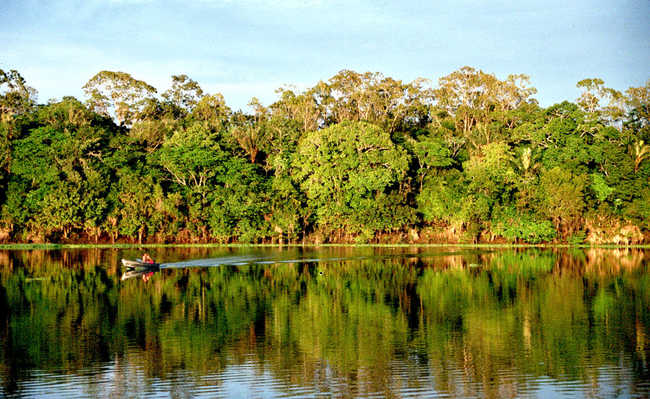what is methane gas
Methane is a greenhouse gas, but it also serves as biogas for energy generation.

Methane bubbles trapped in ice. John Bakator image on Unsplash
Represented by the molecular formula CH4, methane is a colorless, odorless (odorless) gas. It has little water solubility and, when added to air, can be highly explosive. Methane gas is well known for its energy properties and for being produced by the digestion of cows, but we will see that there are many other sources of methane and that biogas can also be very harmful to human health. This gas is the second most significant greenhouse gas with the potential to aggravate global warming.
This gas is in the group of hydrocarbons (HC), which are compounds formed by carbon and hydrogen and which can be present in the form of gases, fine particles or drops. Within the group of total hydrocarbons (THC), there are simple hydrocarbons, such as methane and other compounds with which it is associated, and non-methane hydrocarbons, a group that comprises THC minus the portion of CH4 that eventually binds to they. All have the property of being precursors for the formation of tropospheric ozone and can be vectors of the imbalance of the greenhouse effect.
Methane gas sources
Methane arises in nature due to the following processes:
- Decomposition of organic waste (landfills and dumps);
- Cattle production for human consumption;
- Hydroelectric reservoirs;
- Industrial processes;
- Livestock;
- Metabolism of certain types of bacteria;
- Volcanoes;
- Extraction of mineral fuels (mainly petroleum);
- Production of fossil fuels (gas and coal);
- Burning of fossil fuels (vehicles);
- Anaerobic biomass heating.
As methane can be produced from organic matter, it can be called biogas and can be used as an energy source, learn more in the article "Biogas: what it is and how it is transformed into energy".
Methane gas is also found as a major component in natural exhalations from petroleum regions, existing within the cavities of coal deposits. An unknown (but probably huge) amount of methane is trapped in marine sediment and under glaciers/glaciers known as natural gas fields or geological deposits. Natural gas used as fuel for vehicles has about 70% methane in its composition.
Effects of methane
One of the negative effects of methane on the environment is its contribution to the imbalance of the greenhouse effect, which may contribute to global warming. Methane does not enter the group of pollutants that serve as indicators of air quality, but it does enter the group of short-lived climate pollutants and as for possible climate change, it impacts 20 times more than carbon dioxide (CO2).
- Carbon equivalent: what is it?
- What is climate change in the world?
When inhaled, the gas can cause suffocation and loss of consciousness, cardiac arrest and, in extreme cases, damage to the central nervous system.
How to control?
Methane gas control is complicated. Natural processes in the soil and chemical reactions in the atmosphere help to remove it, as do artificial measures, which are more direct.
In the case of garbage, the methane generated in landfills is burned, as, in this process, it is transformed into CO2, which is a gas that is easier to be sequestered from the atmosphere. However, there is an alternative of energy use, that is, transforming methane into electricity in plants installed in landfills. A good example of this is an American city that has thousands of homes fueled by methane.
According to the City of São Paulo, the city has biogas plants at Bandeirantes and São João landfills, which in addition to transforming methane into energy for 700,000 inhabitants, also sell so-called carbon credits, enabling a reduction of up to 12% of greenhouse gas emissions.
One of the alternatives available to the consumer is to stop consuming meat and animal products. According to experts, maintaining a 100% vegetable diet is the most effective way to save the planet. Another study also showed that reducing red meat consumption is more effective against greenhouse gases than stopping driving.
Another way to contribute to reducing the environmental footprint is to recycle organic waste through domestic composting. In the compost guide of the eCycle portal, we present a step-by-step explanation of how each of the composting methods works to help you choose.










